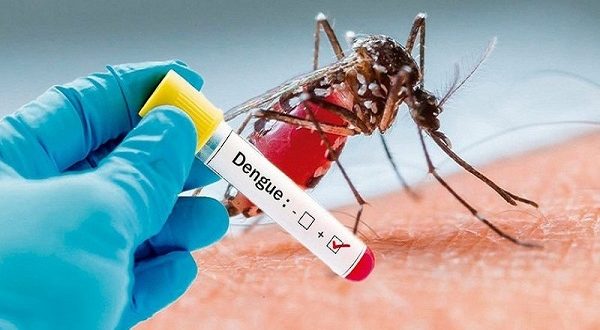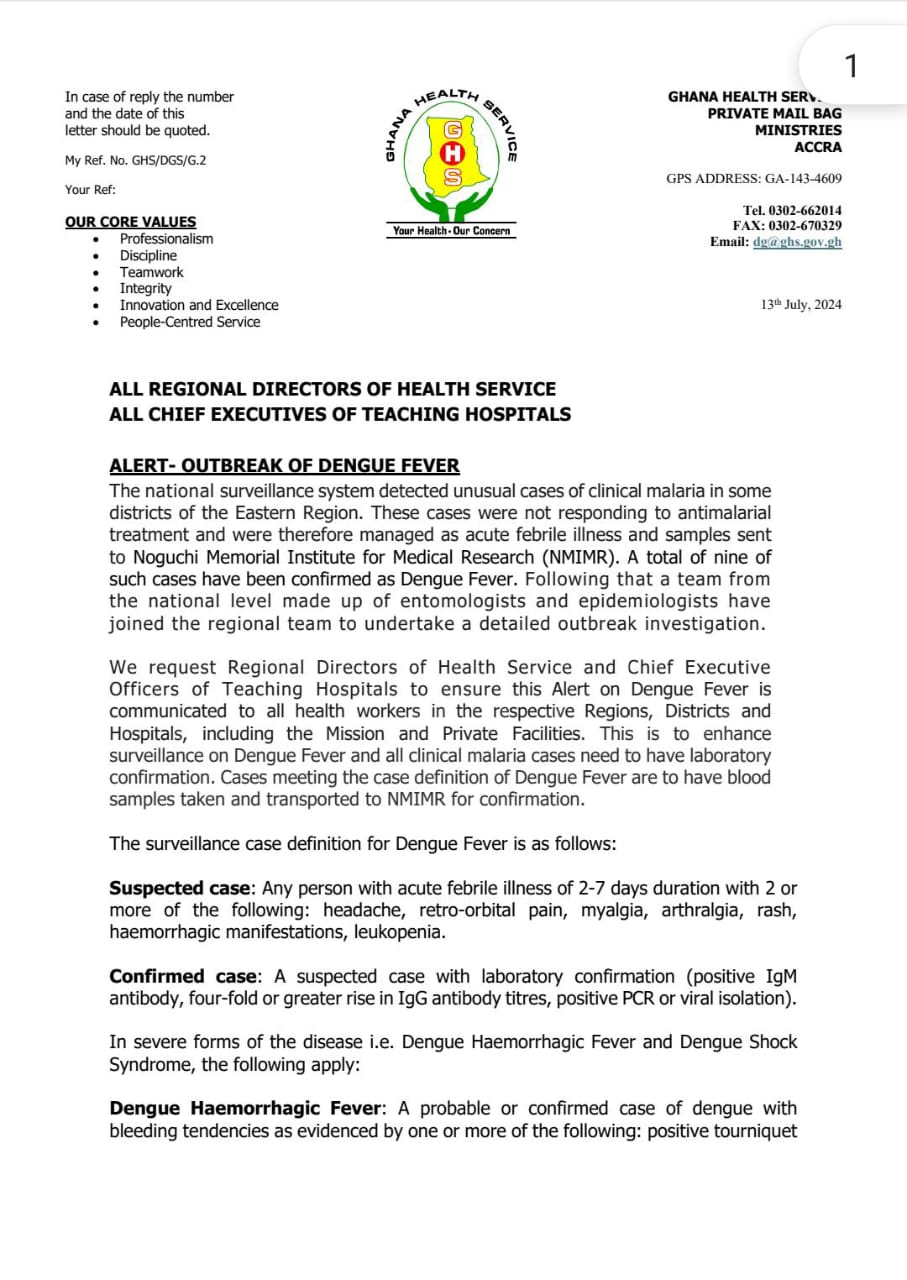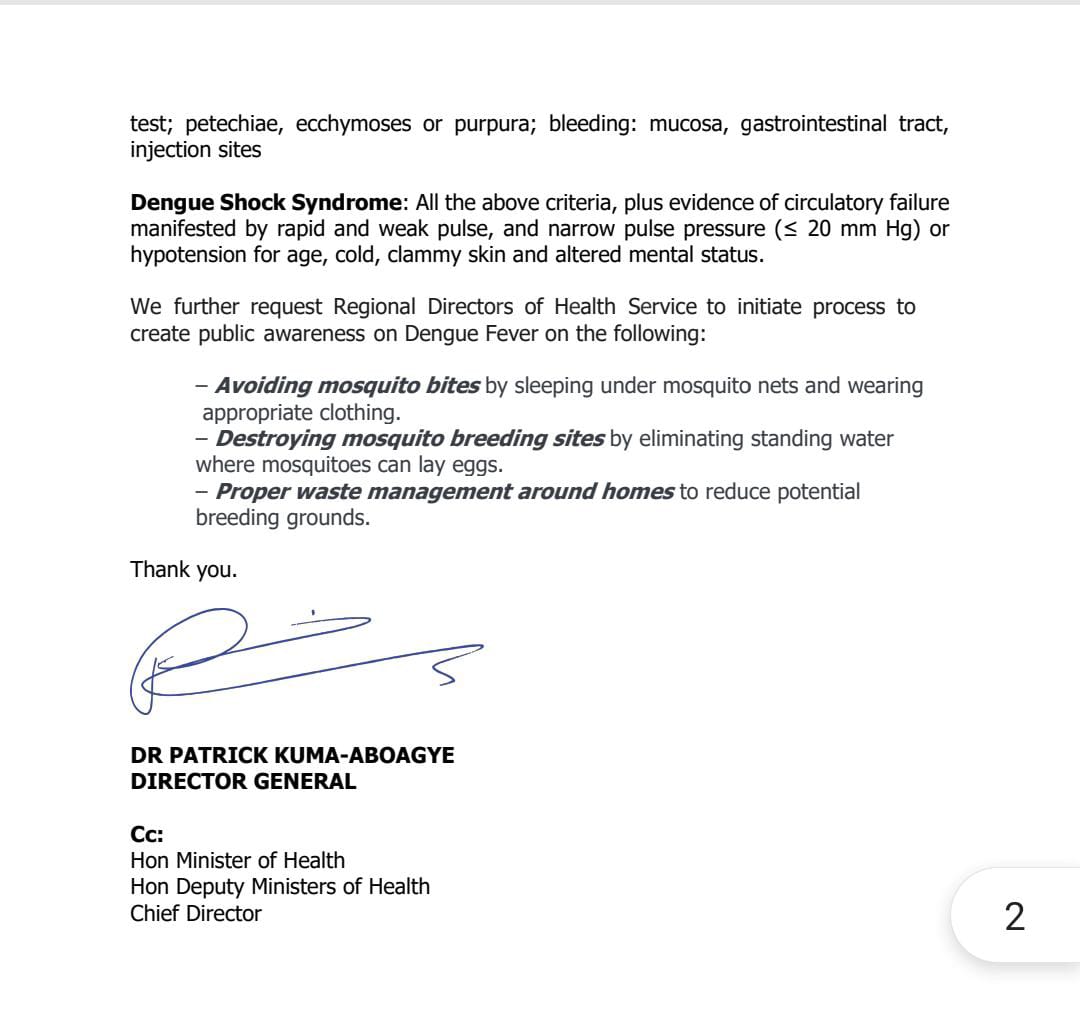Dengue (break-bone fever) is a viral infection that spreads from mosquitoes to people. It is more common in tropical and subtropical climates.
According to the World Health Organisation, most people who get dengue will not have symptoms. But for those who do, the most common symptoms are high fever, headache, body aches, nausea, and rash.
What are the key facts about Dengue fever?
Dengue is a viral infection transmitted to humans through the bite of infected mosquitoes.
About half of the world’s population is now at risk of dengue with an estimated 100–400 million infections occurring each year.
Dengue is found in tropical and sub-tropical climates worldwide, mostly in urban and semi-urban areas.
While many dengue infections are asymptomatic or produce only mild illness, the virus can occasionally cause more severe cases, and even death.
Prevention and control of dengue depend on vector control. There is no specific treatment for dengue/severe dengue, and early detection and access to proper medical care greatly lower fatality rates of severe dengue.
What are the Symptoms of Dengue Fever?
Most people with dengue have mild or no symptoms and will get better in 1–2 weeks. Rarely, dengue can be severe and lead to death. If symptoms occur, they usually begin 4–10 days after infection and last for 2–7 days. Symptoms may include:
Builders Mall Ghana
high fever (40°C/104°F)
Severe headache
pain behind the eyes
muscle and joint pains
nausea
vomiting
swollen glands
rash.
Who is at risk of Dengue fever?
Individuals who are infected for the second time are at greater risk of severe dengue. Severe dengue symptoms often come after the fever has gone away:
severe abdominal pain
persistent vomiting
rapid breathing
bleeding gums or nose
fatigue
restlessness
blood in vomit or stool
being very thirsty
pale and cold skin
feeling weak.
Health experts advise that people with these severe symptoms should get care right away. After recovery, people who have had dengue may feel tired for several weeks.
Can Dengue fever be treated?
There is no specific treatment for dengue. The focus is on treating pain symptoms. Most cases of dengue fever can be treated at home with pain medicine.
Acetaminophen (paracetamol) is often used to control pain. Non-steroidal anti-inflammatory drugs like ibuprofen and aspirin are avoided as they can increase the risk of bleeding.
For people with severe dengue, hospitalisation is often needed.
What is the global picture of Dengue fever?
The incidence of dengue has grown dramatically around the world in recent decades, with cases reported to WHO increasing from 505430 cases in 2000 to 5.2 million in 2019. A vast majority of cases are asymptomatic or mild and self-managed, and hence the actual numbers of dengue cases are under-reported. Many cases are also misdiagnosed as other febrile illnesses (1).
The highest number of dengue cases was recorded in 2023, affecting over 80 countries in all regions of WHO. Since the beginning of 2023 ongoing transmission, combined with an unexpected spike in dengue cases, resulted in a historic high of over 6.5 million cases and more than 7300 dengue-related deaths reported.
What makes the transmission of Dengue fever dangerous?
The dengue virus is transmitted to humans through the bites of infected female mosquitoes, primarily the Aedes aegypti mosquito. Other species within the Aedes genus can also act as vectors, but their contribution is normally secondary to Aedes aegypti. However, in 2023, a surge in local transmission of dengue by Aedes albopictus (tiger mosquito) has been seen in Europe.
After feeding on a infected person, the virus replicates in the mosquito midgut before disseminating to secondary tissues, including the salivary glands. The time it takes from ingesting the virus to actual transmission to a new host is termed the extrinsic incubation period (EIP). The EIP takes about 8–12 days when the ambient temperature is between 25–28°C.
Human-to-mosquito transmission
Mosquitoes can become infected by people who are viremic with the dengue virus. This can be someone who has a symptomatic dengue infection, someone who is yet to have a symptomatic infection (they are pre-symptomatic), and also someone who shows no signs of illness (they are asymptomatic).
Human-to-mosquito transmission can occur up to 2 days before someone shows symptoms of the illness, and up to 2 days after the fever has resolved.
The risk of mosquito infection is positively associated with high viremia and high fever in the patient; conversely, high levels of DENV-specific antibodies are associated with a decreased risk of mosquito infection. Most people are viremic for about 4–5 days, but viremia can last as long as 12 days.
Maternal transmission
The primary mode of transmission of the dengue virus between humans involves mosquito vectors. There is evidence however, of the possibility of maternal transmission (from a pregnant mother to her baby). When a mother does have a dengue infection when she is pregnant, babies may suffer from pre-term birth, low birthweight, and fetal distress.
Other transmission modes
Rare cases of transmission via blood products, organ donation and transfusions have been recorded. Similarly, transovarial transmission of the virus within mosquitoes have also been recorded.
Risk factors
Previous infection with DENV increases the risk of the individual developing severe dengue.
Urbanisation (especially unplanned), is associated with dengue transmission through multiple social and environmental factors: population density, human mobility, access to reliable water source, water storage practice etc.
Community risks to dengue also depend on a population’s knowledge, attitude and practice towards dengue, as the exposure is closely related to behaviours such as water storage, plant keeping, and self-protection against mosquito bites. Routine vector surveillance and control activities engaging community greatly enhances a community’s resilience.
Vectors might adapt to new environments and climate. The interaction between dengue virus, the host and the environment is dynamic. Consequently, disease risks may change and shift with climate change in tropical and subtropical areas, in combination with increased urbanization and movement of populations.
Ghana issues alert after recording 9 cases of Dengue Fever in the Eastern Region
The Ghana Health Service (GHS) on Sunday [July 14, 2024] issued an alert following the confirmation of nine cases of Dengue Fever in the Eastern Region.
This announcement comes after unusual cases of clinical malaria were detected, which did not respond to antimalarial treatment, prompting further investigation.
Dr. Patrick Kuma-Aboagye, Director-General of the GHS in the alert requested all Regional Directors of Health Service and Chief Executives of Teaching Hospitals to disseminate the alert to all health workers within their regions and facilities, including mission and private establishments. This step aims to enhance surveillance and ensure all suspected malaria cases undergo laboratory confirmation.
The detected Dengue Fever cases were confirmed at the Noguchi Memorial Institute for Medical Research (NMIMR) after samples were sent from patients exhibiting acute febrile illnesses. Following this, a team comprising entomologists and epidemiologists has joined the regional team to conduct a detailed outbreak investigation.
Surveillance and Case Definitions
Health workers have been advised to be vigilant and adhere to the surveillance case definitions for Dengue Fever. A suspected case is defined as any person with an acute febrile illness of 2-7 days duration accompanied by two or more of the following symptoms: headache, retro-orbital pain, myalgia, arthralgia, rash, haemorrhagic manifestations, or leukopenia.
A confirmed case requires laboratory confirmation through positive IgM antibody, a four-fold or greater rise in IgG antibody titres, positive PCR, or viral isolation.
For severe forms of the disease, the definitions include:
– Dengue Haemorrhagic Fever: A probable or confirmed case of dengue with bleeding tendencies, evidenced by positive tourniquet test, petechiae, ecchymoses or purpura, mucosal bleeding, gastrointestinal bleeding, or bleeding from injection sites.
– Dengue Shock Syndrome: A probable or confirmed case with evidence of circulatory failure, manifested by a rapid and weak pulse, narrow pulse pressure (≤ 20 mm Hg), hypotension for age, cold and clammy skin, and altered mental status.
Public Awareness and Preventive Measures
The GHS has also called for immediate public awareness campaigns on Dengue Fever. Key preventive measures include:
– Avoiding mosquito bites by using mosquito nets and wearing appropriate clothing.
– Eliminating mosquito breeding sites by removing standing water where mosquitoes can lay eggs.
– Proper waste management around homes to reduce potential mosquito breeding grounds.
The GHS urges the public to remain vigilant and adhere to these preventive measures to curb the spread of Dengue Fever.
THANK YOU for constantly reading stories on MyGhanaMedia.com, a news publishing website from Ghana. Kindly like, follow, comment, and SHARE stories on all social media platforms for more entertaining updates!
Follow us on Twitter: https://twitter.com/
Source: MyGhanaMedia.com
There are four types of content published on MyGhanaMedia.com daily: curated content; syndicated content; user-generated content; and original content.
 MYGHANAMEDIA.COM Best Source Of Latest News
MYGHANAMEDIA.COM Best Source Of Latest News







